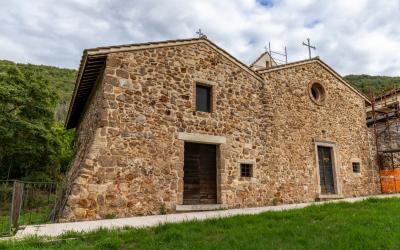The village that still retains its medieval character
The town of Tolfa reveals its medieval origins in the houses made of local stone clinging to the Rocca mountain, gathered under the ruins of the castle: an urban layout typical of the year 1000, linked to the defense from barbarian and Saracen raiders.
From afar you can see the ruins of the castle flanked by the Sanctuary of the Madonna della Rocca.
Further down, at the foot of the medieval village is the Piazza Vecchia (Piazza Matteotti), the first Renaissance square, from which Tolfa developed following the profitable discovery of alum, which marked a turning point in the history of the entire area. Tolfa passed to the Papal State and was enriched with noble palaces, such as Palazzo Buttaoni, Palazzo Celli and Palazzo Panetti, with an elegant internal courtyard equipped with an octagonal cistern. The construction of the Sanctuary of the Madonna della Sughera is due to Agostino Chigi, a Sienese nobleman who was the contractor of the alum quarries at the end of the 1400s. The adjacent Convent of the Augustinian Fathers houses the Cultural Center, which includes the Civic Museum (enriched by cutting-edge restoration laboratories). Arriving at Piazza Vittorio Veneto you are attracted by the long balcony that overlooks the countryside and from which on clear days you can see Rome on one side and the Apennines on the other. The square was built in the 30s to provide a worthy setting for the Palazzo Comunale. Behind it you can visit the beautiful municipal villa. Before continuing along Via Roma you can observe the war memorial on the right. The work created by Vincenzo Jerace consists of a large travertine pedestal with two lateral wings. In the center there is a sculpture, also in travertine, depicting a winged Victory kissing the palm of martyrdom that she holds in her hands.











